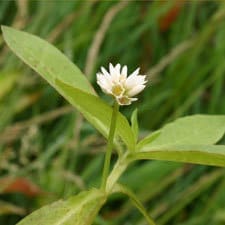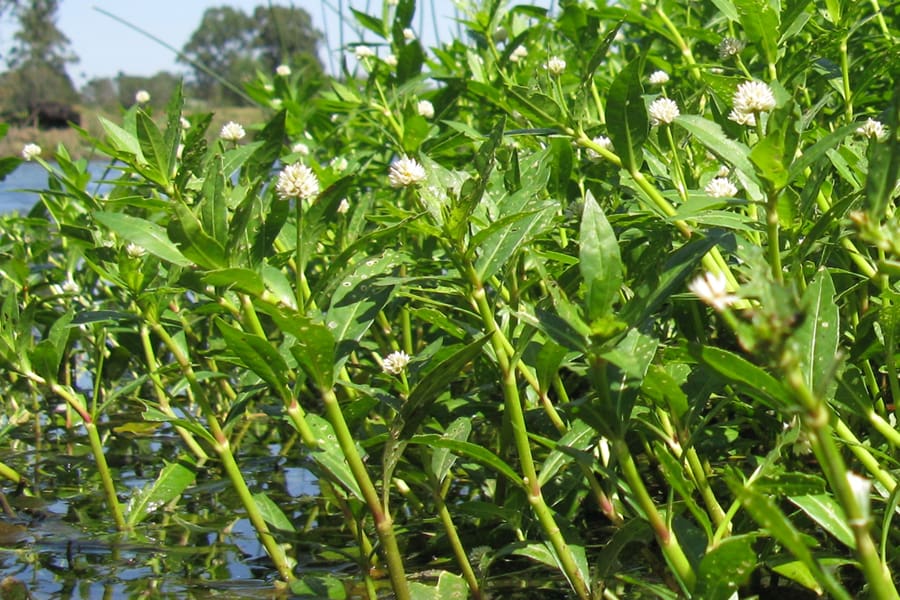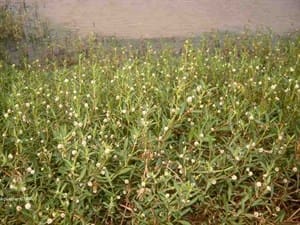The Connection Between Alligator Weed and Erosion” delves into the surprising and often overlooked relationship between an invasive plant species and environmental degradation. You will explore how alligator weed, much more than just a nuisance to gardeners and farmers, contributes to soil erosion and instability in aquatic ecosystems. Discover how this resilient plant affects water flow, soil composition, and overall landscape health, offering valuable insights into why managing this invasive species is crucial for ecological balance. Have you ever strolled by a waterway and noticed thick mats of vegetation choking up the area? You might have encountered Alligator Weed!

Introduction: What is Alligator Weed?
Alligator Weed (Alternanthera philoxeroides) is an invasive aquatic plant native to South America. It was first observed in the United States in the 1890s and has since spread to many parts of the world, including Australia, China, and parts of Europe. Known for its vigorous growth, this plant forms dense mats over water bodies and wetlands.
Characteristics of Alligator Weed
Understanding the basic characteristics of Alligator Weed can help you identify it and understand why it’s such a formidable invader.
- Leaves: Alligator Weed has lance-shaped leaves which are arranged in opposite pairs along the stem.
- Flowers: It produces small, white, papery flowers in clusters.
- Growth Pattern: It can grow both in water and on land, forming dense mats that can float and spread rapidly.
How Alligator Weed Spreads
Like many invasive species, Alligator Weed spreads through various mechanisms, which makes its control quite challenging.
Vegetative Propagation
One of the primary means by which Alligator Weed spreads is through vegetative fragments. Any small piece of the plant that breaks off can take root and start a new colony. This makes eradication immensely difficult because even if a piece is missed, it can regrow and proliferate.
Human Activities
Human activities are a significant factor in the spread of Alligator Weed. Whether it’s through the movement of boats, fishing equipment, or even landscaping efforts, small fragments of the plant can be transported to new locations easily.
Natural Dispersal
Natural elements such as water currents, flooding, and even animals can contribute to the spread of Alligator Weed. For instance, during heavy rains or floods, pieces of the plant can be carried downstream, colonizing new areas.
The Connection Between Alligator Weed and Erosion
Now, let’s delve into the crux of the matter: how Alligator Weed and erosion are interconnected.
Erosion: A Brief Overview
Erosion is the process involving the removal of soil, rock, or dissolved material from one location and transporting it to another. It’s primarily caused by wind, water, or ice. While natural erosion occurs slowly, human activities and invasive species can accelerate the process.
| Type of Erosion | Description |
|---|---|
| Water Erosion | Removal of soil particles by water flow. |
| Wind Erosion | Displacement of soil particles through wind action. |
| Ice Erosion | Movement of particles by ice, as seen in glacial areas. |
The Dual Role of Alligator Weed
Alligator Weed relates to erosion in a surprisingly dualistic manner. On one hand, it can prevent erosion, and on the other hand, its presence can exacerbate the erosion problem.
Prevention of Erosion
In some situations, the dense mats formed by Alligator Weed can hold soil in place, preventing it from being washed away by water currents. The extensive root system creates a protective mesh that can help stabilize the riverbanks and shorelines.
Acceleration of Erosion
Conversely, the weight of dense Alligator Weed mats can lead to the collapse of riverbanks and shorelines. When these mats die and decompose, they leave large patches of bare soil exposed, which are then more susceptible to erosion. Furthermore, the removal efforts, especially if not done carefully, can also disturb the soil and increase erosion rates.
Environmental Impacts of Alligator Weed
The environmental impacts of Alligator Weed extend beyond erosion. The presence of this invasive species has wide-ranging implications for ecosystems.
Impact on Native Species
Alligator Weed outcompetes native aquatic plants for resources. This can lead to a reduction in biodiversity as native species are displaced. The dense mats can block sunlight, affecting the photosynthesis of submerged plants and disrupting the entire aquatic ecosystem.
Water Quality
The thick mats of Alligator Weed hinder water flow, leading to stagnant water conditions. This can reduce oxygen levels in the water, affecting fish and other marine life. Decomposing plant material can further reduce water quality by increasing nutrient levels, causing algal blooms.
Economic Impact
Managing Alligator Weed requires significant financial resources. Whether it’s through mechanical, chemical, or biological control methods, the costs can add up. Furthermore, clogged waterways can affect agriculture, fishing, and tourism activities.

Management and Control Methods
Given its invasive nature and the widespread damage it causes, managing Alligator Weed is critical. Various methods are employed to control its spread and mitigate its impacts.
Mechanical Control
Mechanical control involves physically removing the plant. While effective, this method is labor-intensive and must be carried out regularly to prevent re-growth. Additionally, ensuring the complete removal of plant fragments is crucial to curb re-infestation.
Chemical Control
Herbicides are effective in controlling Alligator Weed, but care must be taken to use them judiciously to minimize environmental impact. Commonly used herbicides include glyphosate and 2,4-D. A planned application is necessary for maximum effectiveness.
Biological Control
Biological control involves the use of natural enemies to control Alligator Weed’s growth. This can include insects like the Alligator Weed Flea Beetle (Agasicles hygrophila), which feeds on the plant. While biological control can be effective and environmentally friendly, it requires careful management to avoid unintended consequences.
Integrated Pest Management (IPM)
Integrated Pest Management (IPM) is a holistic approach to control invasive species by combining mechanical, chemical, and biological methods. The strategy involves regular monitoring and adapting control methods as necessary.
Case Studies: Real-World Examples
To better understand the connection between Alligator Weed and erosion, it can be enlightening to look at some real-world examples.
Case Study 1: Southeastern United States
In the southeastern United States, Alligator Weed has proliferated in various water bodies, particularly in Florida and Louisiana. The plant blocks irrigation canals, clogs drainage systems, and exacerbates erosion along riverbanks. Efforts to control it involve a combination of chemical treatments and mechanical removal.
Case Study 2: Australia
Australia has been dealing with Alligator Weed for several decades. Local governments have implemented extensive management plans, involving the introduction of biological control agents such as the Alligator Weed Flea Beetle. These efforts have significantly reduced Alligator Weed infestations, though continual management is necessary.
Case Study 3: China
In regions of China, Alligator Weed has severely impacted rice paddies, choking irrigation channels and spreading rapidly during the rainy season. Control efforts involve a mix of chemical treatments and community-based manual removal strategies.

Best Practices for Preventing the Spread
Preventing the spread of Alligator Weed requires concerted efforts from all stakeholders, including the public, government agencies, and environmental organizations.
Public Awareness
Educating the public about the identification and impacts of Alligator Weed is crucial. Simple steps like cleaning boating equipment and avoiding the transportation of plant fragments can go a long way in preventing its spread.
Quarantine Measures
Government agencies can implement quarantine measures to restrict the movement of Alligator Weed, especially in regions where it is not yet established. Inspections at ports and borders can help in early detection and eradication.
Conclusion
The connection between Alligator Weed and erosion is multifaceted. While in some scenarios, it may help in stabilizing soil, more often than not, it accelerates erosion and causes extensive environmental damage. Effective management and control measures are essential to mitigate its impacts. By understanding and addressing the challenges posed by Alligator Weed, we can better preserve our natural ecosystems and protect our water resources.
So next time you come across this tenacious plant, you’ll have a deeper understanding of its impact and perhaps, play a part in curbing its influence.